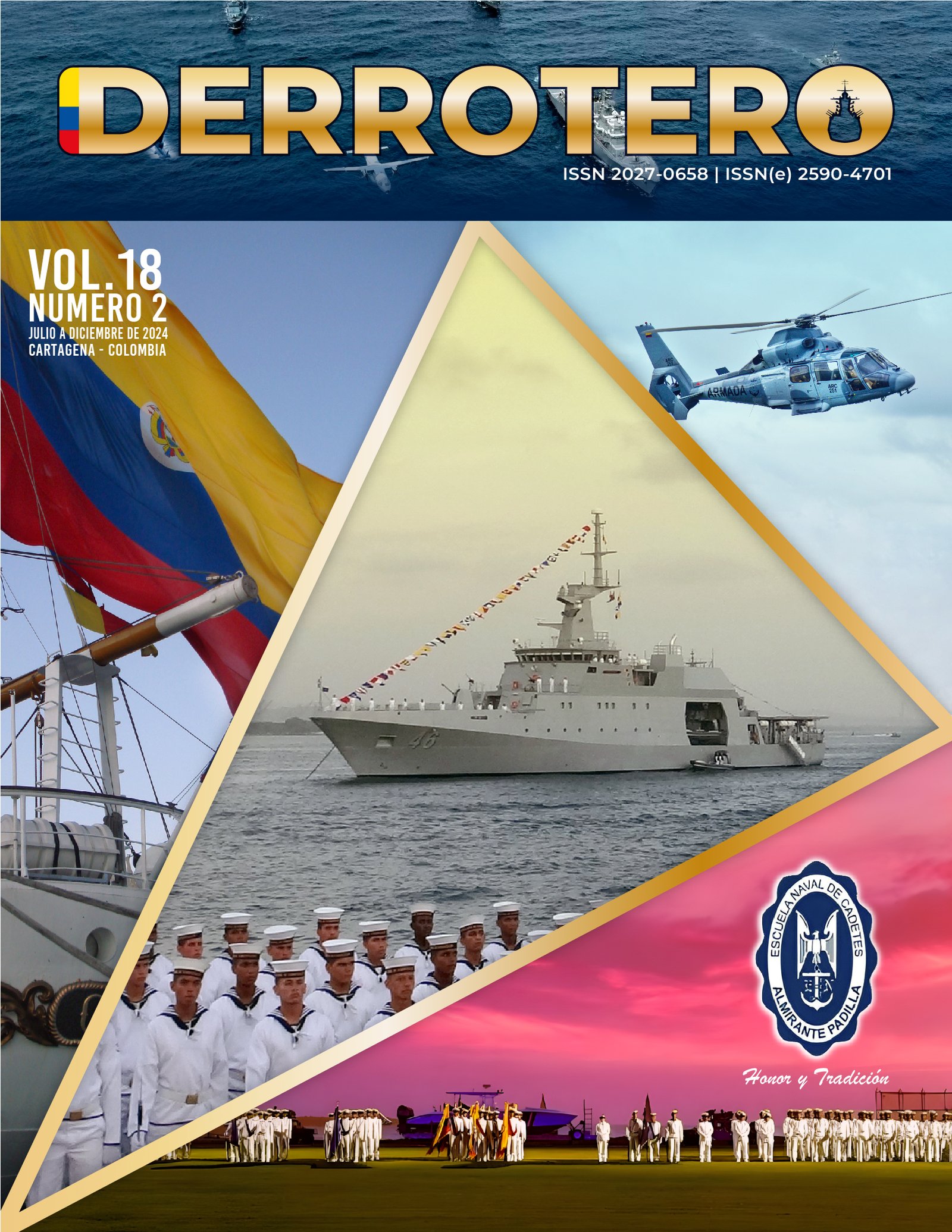Factors and actors that make the Lesser Antilles a key region for the transit and storage of CHC to the United States and Europe
DOI:
https://doi.org/10.70554/Derrotero2024.v18n02.06Keywords:
Drug trafficking, Lesser Antilles, Route Transnational Criminal Organizations (OCT), Maritime Routes, Regional SovereigntyAbstract
The article analyzes the factors and actors that make the Lesser Antilles a key region for the transit and storage of illicit substance (CHC) shipments bound for the United States and Europe. It argues that, in recent years, the Caribbean Sea has experienced significant growth in its importance as a hub for tourism and international maritime trade, attracting the attention of transnational criminal organizations (TCOs) and organized criminal groups (OCGs) involved in maritime drug trafficking. These illicit actors have intensified their activities in search of secure maritime routes to consolidate the trafficking and commercialization of narcotics toward the major drug markets in North America and Europe.
The article highlights that the Lesser Antilles, due to their geographical, political, and economic diversity, provide a conducive environment for narcotrafficking activities. Of the 30 territories in the Caribbean, fewer than 15 are sovereign, while the majority maintain dependent relationships with external countries. This situation results in a variety of legal frameworks regarding the control of their aquatic spaces, complicating the exercise of effective and sovereign control by competent authorities. Additionally, the presence of uninhabited islands in the region facilitates the temporary storage of drugs, clandestine transportation, and their subsequent distribution to illegal markets.
The study concludes that the Lesser Antilles have become a critical point in the drug trafficking chain to the United States and Europe due to the geographical, political, and legal conditions that favor the concealment and movement of illicit substances, posing a significant challenge to the region's security and sovereignty.
References
Araujo, S. (2023). Tráfico marítimo y su conectividad mundial.
Bachelet, P. A. (2024). The complexities of inequality in Latin America and the Caribbean. Accedido el 1 de septiembre de 2024, de https://www.iadb.org/en/news/complexities-inequality-latin-america-and-caribbean.
Beharry, V. (2017). The institutionalization of gang violence in Trinidad and Tobago. International Relations Review. Accedido el 23 de agosto de 2024, de https://www.irreview.org/articles/2024/3/27/the-institutionalization-of-gang-violence-in-trinidad-amp-tobago.
Boevennieuws. (2023). Dennis G., Urvin "Nuto" W. en Terence de V. en República Dominicana, detenidos con vínculos a Mocro-Mafia y No Limit Soldiers. Accedido el 23 de agosto de 2024, de https://www.boevennieuws.pro.
Burunciuc, L., Dukharan, M., & Paffhausen, A. L. (2023). Data absence hampers poverty reduction efforts in the Caribbean. Accedido el 23 de agosto de 2024, de https://blogs.worldbank.org.
Caribe. (2023). La conectividad del Caribe.
Cecilia, A. (2022). Principales rutas del narcotráfico en el Caribe.
CMCON. (2024). Catálogo de modalidades 2024. Disponible en https://cimcon.armada.mil.co.
Doherty, T. (2023). From the Caribbean to Cork: The journey of cocaine ship M/V Matthew to Ireland. Accedido el 23 de agosto de 2024, de https://www.breakingnews.ie.
Executive, M. (2020). Photos: Colombian navy seizes cocaine from bulker off Aruba. Accedido el 23 de agosto de 2024, de https://www.maritime-executive.com.
Group, W. B. (2024). Gini index - Latin America & Caribbean. Accedido el 1 de septiembre de 2024, de https://data.worldbank.org.
INDEX, G. O. (2023). Global organized crime index.
Infobae. (2023). Infobae. Disponible en https://www.infobae.com.
Insight. (2022). El resurgimiento de la cocaína en el Caribe. Disponible en https://www.minjusticia.gov.co/programas-co/ODC.
InsightCrime. (2019). Archipiélago de Venezuela, nueva plataforma para el tráfico de drogas. Accedido el 23 de agosto de 2024, de https://insightcrime.org.
InsightCrime. (2023). Narcotráfico usa la Isla Margarita en Venezuela como puerta a Europa. Accedido el 23 de agosto de 2024, de https://insightcrime.org.
Internacional, P. A. (2022). Crimen organizado transnacional y seguridad en el Caribe.
International, T. (2023). Corruption Perceptions Index 2023.
Manuel, M. (2009). Caribbean Atlas. Accedido el 23 de agosto de 2024, de https://atlas-caraibe.certic.unicaen.fr.
Pastor, M. L. (2022). El mar Caribe, el narcotráfico y los nuevos piratas. Disponible en https://dialnet.unirioja.es.
Porteconomics. (2023). The Caribbean: One port geography, many markets, different expectations. Accedido el 23 de agosto de 2024, de https://www.porteconomics.eu.
Roth, P. (2000). Caribbean Atlas. Accedido el 23 de agosto de 2024, de https://atlas-caraibe.certic.unicaen.fr/en/page-122.html.
Schargrodsky, E., & Freira, L. (2021). Inequality and crime in Latin America and the Caribbean: New data for an old question. Technical Report Working Paper No. 13, UNDP LAC. Background Paper for the UNDP LAC Regional Human Development Report 2021.
Voss, G. (2023). Caribbean nations call for US gun crackdown as murder rates soar. Disponible en https://insightcrime.org/news/caribbean-nations-us-gun-crackdown-murder-rates/.
Downloads
Published
How to Cite
Issue
Section
License
Copyright (c) 2024 Herman Adriaan Henri Langemeijer

This work is licensed under a Creative Commons Attribution-NonCommercial 4.0 International License.
The authors retain copyright and grant the journal the right to publish the work under a Creative Commons Attribution License, which allows third parties to use the published content as long as they credit the author(s) and the publication in DERROTERO.
This work is licensed under a Creative Commons Attribution-NonCommercial-ShareAlike 4.0 International License.










